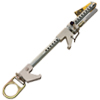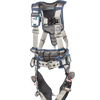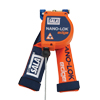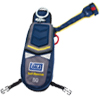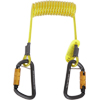Tools dropped from a height pose a risk to everyone in the area. Through direct impact or deflection a dropped tool or object becomes a bullet or shrapnel with the potential of creating life-changing injury or fatality.
Utilizing fall protection for tools – anchors and connectors specifically designed for attachment tools – the risk of serious injury is SIGNIFICANTLY reduced.
Dropped Object Hazards
A dropped object hazard can be anything like a small tool or box of nails that can be accidentally kicked or blown off a at-height ledge is a hazard. Less obvious hazards include tools stored in pockets, or pooches or bags with non-secure closure.
There are two primary classifications of fall object incidents: direct impacts and deflections.
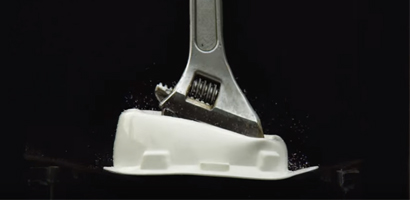
Direct Impact
Depending on the size and weight of an object, a direct impact could easily reach fatal levels – even when wearing a hardhat.
Example: a 8.3 lb. wrench dropped from just 50 feet creates 1660 lb. or 7384 Newtons of force.
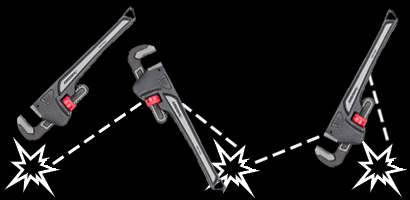
Deflections
Deflections are even potentially more dangerous because of the unpredictability of the tool and the wide area of danger.
Example: An object (8.3 lb. Wrench) dropped from height could potentially deflect itself hundreds of feet outside of a designated “Drop Zone” and injury unsuspecting and unrelated victims.
How can I minimize Dropped Object Hazards?
Don’t store anything near a leading edge.
Use Passive systems like guardrails, mesh netting, screens, floor coverings and tool canopies
Use tool restraints like: transport buckets, tool holsters and pouches to keep tools in place.
Use tool arrest systems to anchor tools inplace – keeping them nearby and ready for use.
Use barricades and zoned-off areas to keep people away.
Dropped Object Prevention Basics
Similar to a personal fall arrest system (PFAS), dropped object prevention boils down to an anchor, body support and a connector.
A comprehensive dropped object prevention system must also include those basic components: Tool attachment points, Connectors and Anchorages.
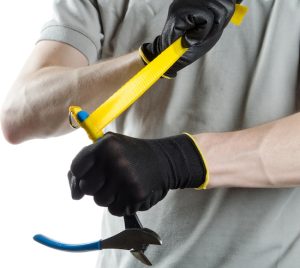
Tool Attachment Points
The attachment point is the area where the connector attaches to the tool. The attachment point plays the same role a harness would in a PFAS.
Once a tool contains an attachment point, it is considered “tether-ready”.
Examples Include:
- Quick Spin + Quick Ring Attachment
- D-ring Cord
- D-ring + Quick-wrap Tape
- Tool Cinch

Connectors
Just like a lanyard or SRL, tools require something to connect them to the anchorage point.
Examples Include:
- Tool Tethers
- Hard Hat Tethers

Anchorages
These are the final component of a comprehensive dropped object prevention plan.
The anchor is the point where the tether-ready tool and connector attach to secure the tool. There are anchorage points for off the body (tools over 5lbs.) and attachment points for use on the body (tools less than 5lbs.).
Examples Include:
- Tool Belts & Belt Loops
- Holsters
- Wristbands
3M Fall Protection for Tools (Formerly Python Safety)
Objects dropped from height was the #3 highest cause of work-related injuries in 2015 and killed 519 workers. OSHA receives over 100 “struck by falling object or equipment” recordables each day.
Fall protection for tools is no gimmick. Object drop prevention systems help to prevent thousands of work-related incidents from happening each year.
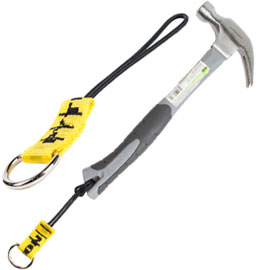
Attachment Points
Allows for almost ANY tool to be make tether-ready in seconds.
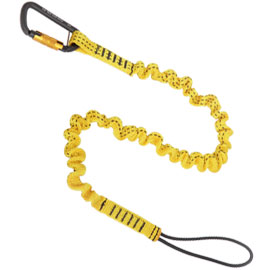
Tool tethers
Suitable for retraining tools up to 80lbs.
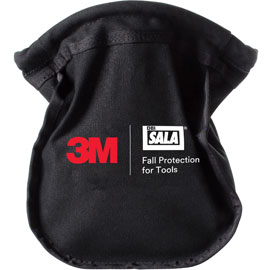
Tool Pouches
Specifically designed to contain objects and prevent them from escaping until ready for use
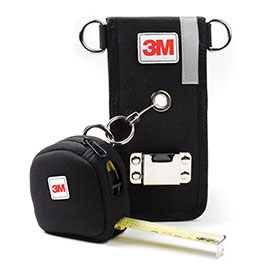
Tool Holsters
Standard and specialized belt or harness holsters designed to store popular hand tools and other common objects used while working at-height
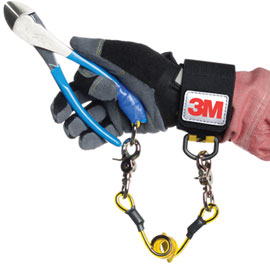
Wristbands
Works with most lanyard, makes it very easy to tie-off tools and work at height.

Spill Control Buckets
Includes closure systems to prevent dropped tools or objects

Tool Belts
Compatible with a wide selection tool belt holsters, lanyard and pouches.
![FPUSA-1-300x172[1]](https://www.fallprotectionusa.com/wp-content/uploads/2024/03/FPUSA-1-300x1721-11.png)


